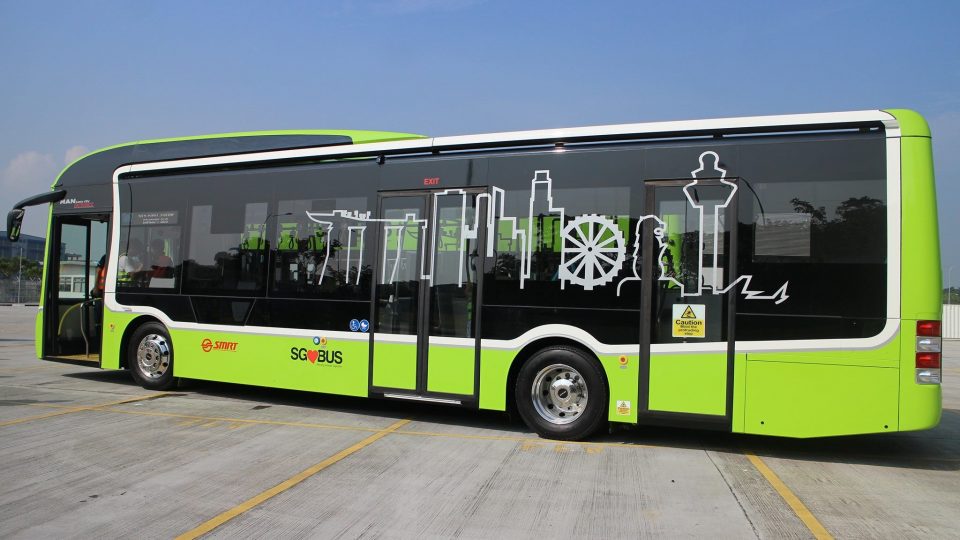You might’ve noticed something different yesterday if you took bus service 143, which travels between Jurong East and Toa Payoh via Singapore’s central area.
…You did notice something different, right?
Well, we don’t blame you for missing it. The above Tower Transit bus with three doors is the only such bus currently launched on the roads as part of an initiative by the Land Transport Authority (LTA) to evaluate the feasibility of these buses with the intention of assisting passenger flow.
Its main feature: an additional staircase that allows commuters aboard the upper deck to exit the bus in a smoother fashion. Commuters on the lower deck will still exit the bus as usual, of course. As per the standard of a test bus, much-needed utilities such as USB ports for commuters and vibrating seats (for potentially sleepy drivers on the road, not for massages) have been implemented. On the subject of facilities for drivers, an in-built system called Mobileye will be utilized to alert drivers to any blind spots by way of visual and audio cues.
A second experimental bus — a single decker with the same number of doors – will be launched in the second quarter of 2017 by SMRT.
By this point you may be wondering, “What else have you got, LTA?”. Glad you asked.
A dash of Singlish — a refreshing change from the usual repertoire of bland messages — should help garner the attention of Singaporeans.
In a report by The Straits Times, these Singlish signs are all accompanied by “short explanations in standard English.”
However, like all new features implemented in Singapore, there’ll be some who are less open about the idea. A 34-year-old design engineer said, “Tourists who do not know Singlish might misunderstand the sign and leave with a bad impression of Singaporeans’ standard of English.”
A very #nochill sentiment, but it seems like his opinion is one of a minority. Many others are for the Singlish signs, and they told the unhappy ones to relak lah, bro.










